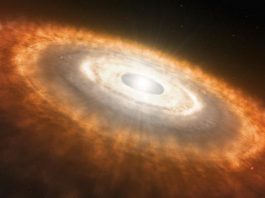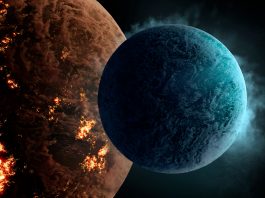Through analysis of high-resolution data from a ten-metre telescope in Hawaii, researchers at Lund University in Sweden have generated new knowledge about three young stars at the very heart of the Milky Way.
The young stars proved to be unusually newly formed, with a puzzling chemical composition that surprised the researchers.
The study, ‘A Wide Metallicity Range for Gyr-old Stars in the Nuclear Star Cluster,’ published in The Astrophysical Journal Letters, examined a group of stars in the nuclear star cluster that makes up the galaxy’s heart.
It concerns three stars that are difficult to study because they are extremely far away from our Solar System and hidden behind enormous clouds of dust and gas that block out light. The fact that the area is also full of stars makes it very complicated to discern individual stars.
Proposing the theory of young stars
In a previous study, the researchers hypothesised that these specific young stars existed in the middle of the Milky Way.
Rebecca Forsberg, a researcher in astronomy at Lund University, commented: “We can now confirm this. In our study, we have been able to date three of these stars as relatively young, at least as far as astronomers are concerned, with ages of 100 million to about one billion years.
“This can be compared with the Sun, which is 4.6 billion years old,” she added.
The nuclear star cluster has mainly been seen, quite rightly, as a very ancient part of the galaxy. However, the researchers’ new discovery of such young stars indicates that there is also active star formation in this ancient Milky Way component.
Despite this, dating stars 25,000 light years from Earth cannot be done quickly.
How was the stars’ age officially determined?
The researchers used high-resolution data from the Keck II telescope in Hawaii, one of the world’s largest telescopes with a mirror ten metres in diameter. They then measured how much iron the young stars contained for further verification.
The element is essential for tracing the galaxy’s development, as the theories the astronomers have about how stars are formed and galaxies develop indicate that young stars have more of the heavy elements.
To determine the level of iron, the astronomers observed the stars’ spectra in infrared light, which, compared with optical light, are parts of the light spectrum that can more easily shine through the densely dust-laden parts of the Milky Way.

It was shown that the iron levels varied considerably, which surprised the researchers.
“The very wide spread of iron levels could indicate that the innermost parts of the galaxy are incredibly inhomogeneous, i.e. unmixed,” said Brian Thorsbro, researcher in astronomy at Lund University.
“This is something we had not expected and not only says something about how the centre of the galaxy appears but also how the early Universe may have looked.”
How the study can deepen our knowledge of the early Universe
As well as determining the age of the younger stars, the study sheds significant light on our understanding of the early Universe and the functioning of the very centre of the Milky Way.
The results may also be beneficial to inspire continued and future explorations of the galaxy’s heart and further development of models and simulations of the formation of galaxies and young stars.
Forsberg explained: “I think it is fascinating that we can now study the very centre of our galaxy with such a high level of detail.
“These measurements have been standard for observations of the galactic disc where we are located but have been unreachable for more faraway and exotic parts of the galaxy.
She concluded: “We can learn a lot about how our home galaxy was formed and developed from such studies.”









